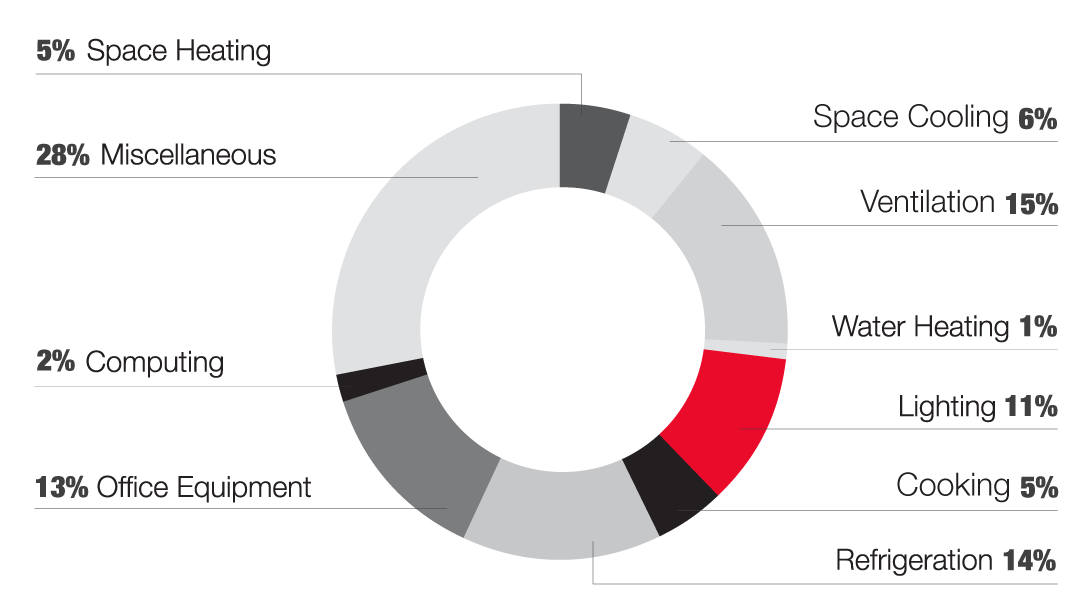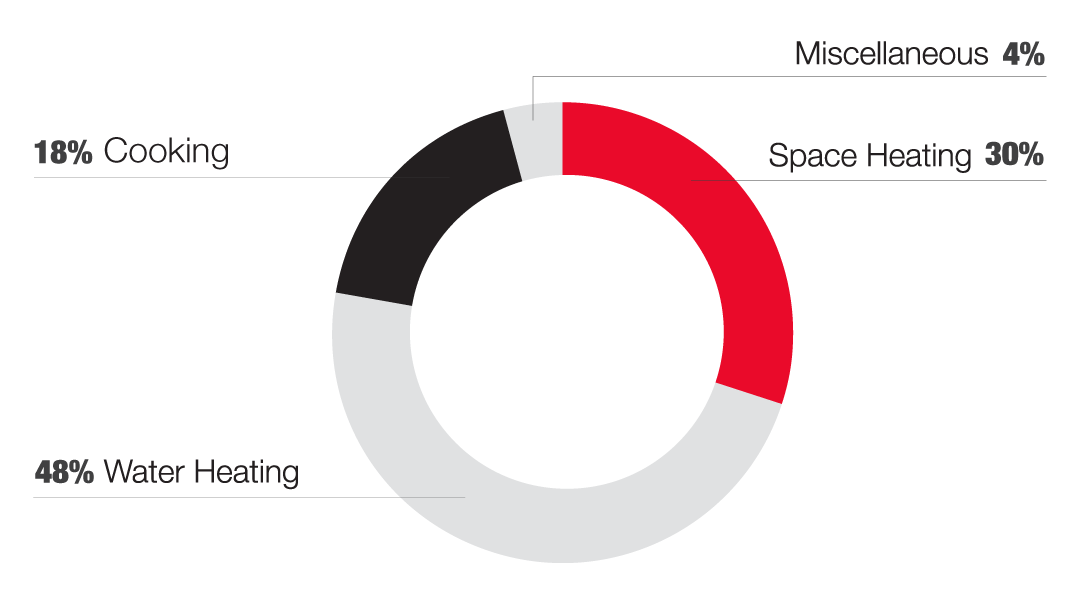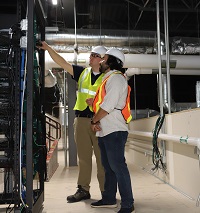Check in to energy savings for your hotel
Did you know the average hotel in the Midwest spends over $22,000 per year on electricity and natural gas? Keeping every guest comfortable in every room takes considerable energy. Bundling upgrades and saving on improvements is easier than ever with the Small Business Express program, which connects you with qualified contractors and rebates to create lasting energy efficiency savings for your hotel.
What uses the most energy in hotels
The following pie charts illustrate what hotel activities use the most energy and cost the most. Space heating, cooling and ventilation account for a large fraction of energy use in hotels. Electricity end uses include (from the top, counterclockwise): 5% space heating, 28% miscellaneous, 2% computing, 13% office equipment, 14% refrigeration, 5% cooking, 11% lighting, 1% water heating, 15% ventilation and 6% space cooling. Natural gas end uses include (from the top, counterclockwise): 4% miscellaneous, 18% cooking, 48% water heating and 30% space heating.
Electricity End Uses

Natural Gas End Uses

What's costing hotels the most
| End Uses | Average Electric Cost/Month | Average Gas Cost/Month | Energy Savings Potential |
|---|---|---|---|
| Space Heating, Cooling and Ventilation | $394 | $112 |
Moderate
|
| Miscellaneous | $452 | $15 |
Moderate
|
| Office Equipment and Computing | $227 | - |
Moderate
|
| Refrigeration | $212 | - |
High
|
| Water Heating | $15 | $180 |
Low
|
| Lighting | $167 | - |
High
|
Small Business Express is here to lend a hand
Small Business Express makes it easy for you to get professional guidance to identify energy-saving opportunities. Eligible rebates can help lower your out-of-pocket cost to replace failing equipment, and help you save energy and money long term.
Ways to Save

Heating and cooling equipment accounts for over a quarter of energy used in hotels.
- Simple: Seal around windows and doors with new caulk and weather stripping every few years. Clean PTAC heating and cooling coils at least once a month to ensure efficient operation. Keep blinds and curtains closed during the day in the summer. In the winter, keep blinds and curtains closed at night to keep warm air inside and guests comfortable.
- Low cost: Add insulation to energy code levels to maximize savings and comfort; be sure to add insulation after air sealing. Schedule regular tune-ups for air conditioners, furnaces and boilers to ensure systems are working correctly, as well as whole building tune-ups to ensure efficient operation of the building.
- Capital investment: Replace older systems, such as air conditioners, furnaces and boilers, with high-efficiency models. Heating and cooling costs in guest rooms with packaged terminal A/C and PTAC units can also be reduced by installing packaged terminal heat pump (PTHP) units, which run much more efficiently. Since hotel rooms are frequently unoccupied, a guest room management system is recommended to lower energy usage while the room is empty by automatically adjusting the thermostat, turning off lights or using other integrated features.

Computing, office equipment and other usage account for a large portion of energy costs. Computing and office equipment typically cost $227 a month.
- Simple: Turn lights, televisions and air conditioners off when a room is not in use. Manage the computer network to ensure computers go into low-power or “sleep” mode after a period of inactivity.
- Low cost: Install advanced power strips, which detect a drop in energy usage and turn off electronics when staff have left for the day.
- Capital investment: Upgrade to ENERGY STAR certified models when replacing equipment.

A typical hotel spends $212 a month in refrigeration costs, and the list of tips below will help you save money.
- Simple: Check and replace seals around walk-in coolers and freezers.
- Low cost: Service your refrigeration equipment every two years to ensure refrigeration levels have not decreased and the system is working properly.
- Capital investment: Upgrade to ENERGY STAR certified reach-in refrigerators and freezers.

Water heating accounts for almost 50% of the typical hotel’s natural gas usage.
- Simple: Lower your water heater temperature to 120°F; each 10°F reduction in water heater temperature can save 3-5% in water heating costs.
- Low cost: Install low-flow showerheads that use 1.5-2.0 gallons of water per minute and faucet aerators that use 0.5-1.0 gallons of water a minute to reduce hot water usage.
- Capital investment: Replace older water heaters with high-efficiency models. Replace dishwashers with ENERGY STAR certified models.

Lighting is another large energy user for hotels. Lighting alone typically costs $167 per month.
- Simple: Turn lights off when a space is not in use.
- Low cost: Install occupancy sensors to turn lights off in rooms where lights might be left on for extended periods, despite not being occupied.
- Capital investment: Replace fluorescent lights with LEDs to see savings of 50% or more! LEDs also have a longer lifespan, resulting in reduced replacement costs. Replace exterior lights with LEDs to save even more.

See how your hotel compares
Energy Use Intensity (EUI) is a common measure used to benchmark a building’s energy use as a factor of its size. To calculate EUI for your hotel, total your electric bills for one year, then divide by your building’s square footage; repeat for natural gas. If the score is lower than those listed below, you are using less energy than most.
|
Average EUI for Hotels in the Midwest
|
|
|---|---|
|
Electricity
|
Natural Gas
|
|
15.6 kWh/square foot
|
0.42 therms/square foot
|
Call us today at 800-432-8583 to learn about tools that can help you with benchmarking your facility.
Other Resources